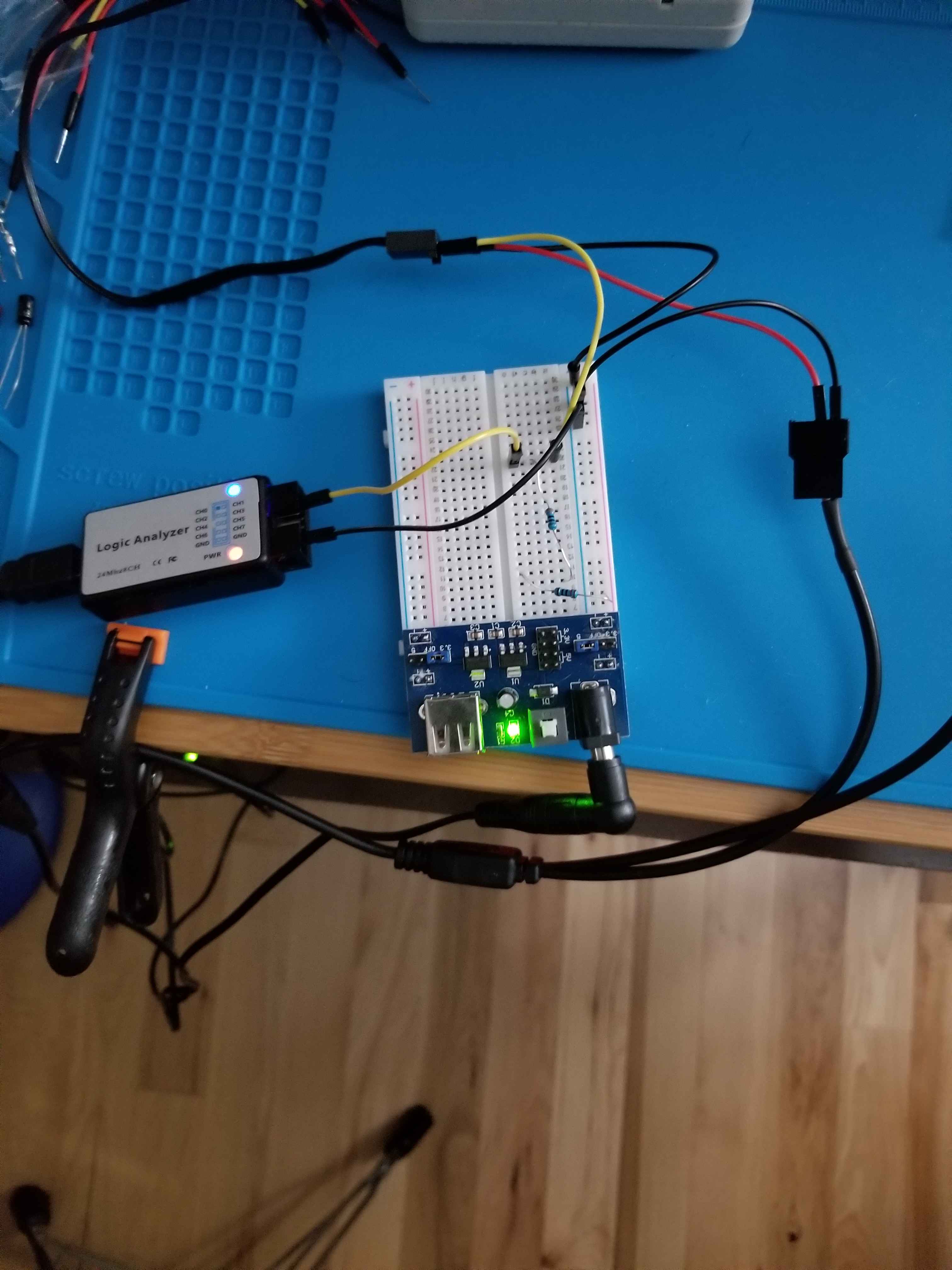
Wed 06/24/20 10:48:52 pm
Categories:
Electronics
My first Logic Analyzer project: measuring fan RPM.
This post is similar to Measuring Fan Speed With a Microcontroller. As I mentioned in the first fan speed post, I got a few ideas for other ways to measure the fan’s RPM. One of those was to use a microcontroller, described here. The other way was to use a logic analyzer, which I describe in this post.
For this project I used a HiLetgo USB 8 Channel Logic Analyzer controlled with the Open Source software Sigrok PulseView. I used the same setup as in the microcontroller project. This time I sent to the signal to the logic analyzer. My plan was to count the pulses over some unit of time but it turns out PulseView has some powerful utilities for decoding logic signals. The Timing utility calculated pulse frequency based on each pulse, and the average frequency.
Here is the setup with a 12V power supply running the fan, and 5V for the pull up resistor:

Here is a screenshot of the recorded pulses in PulseView:
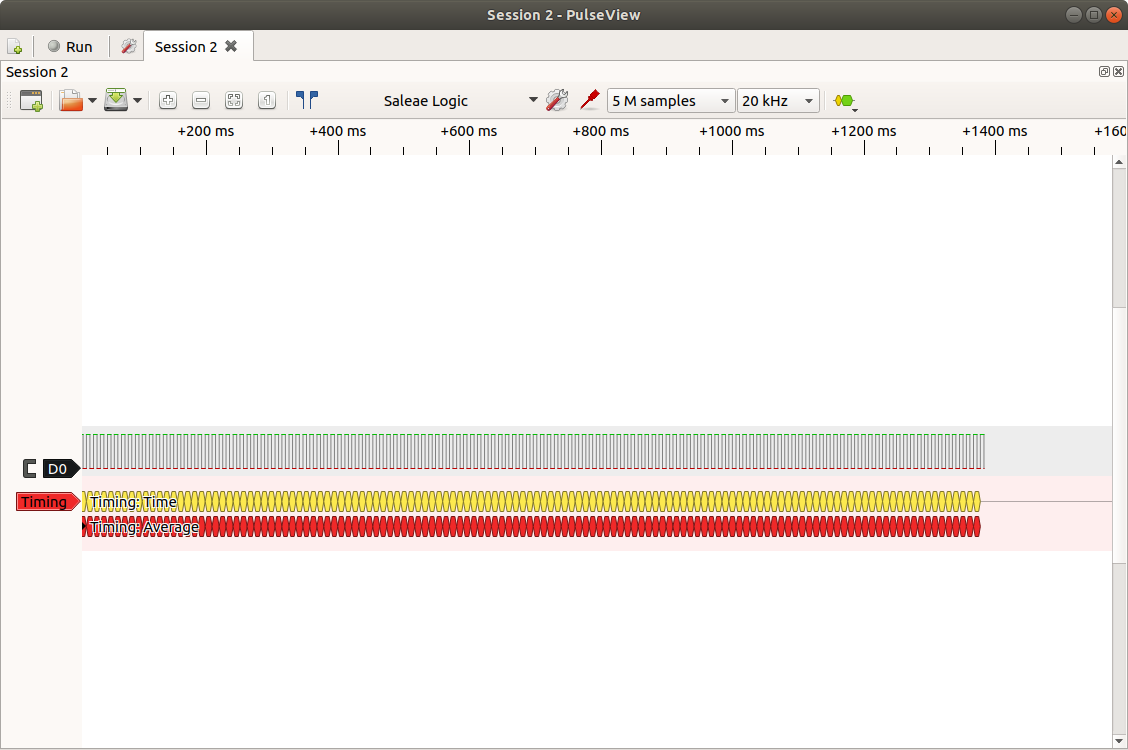
Zooming in on the data shows the logic analyzer is counting pulses at about 94 Hz, just like the other two methods:
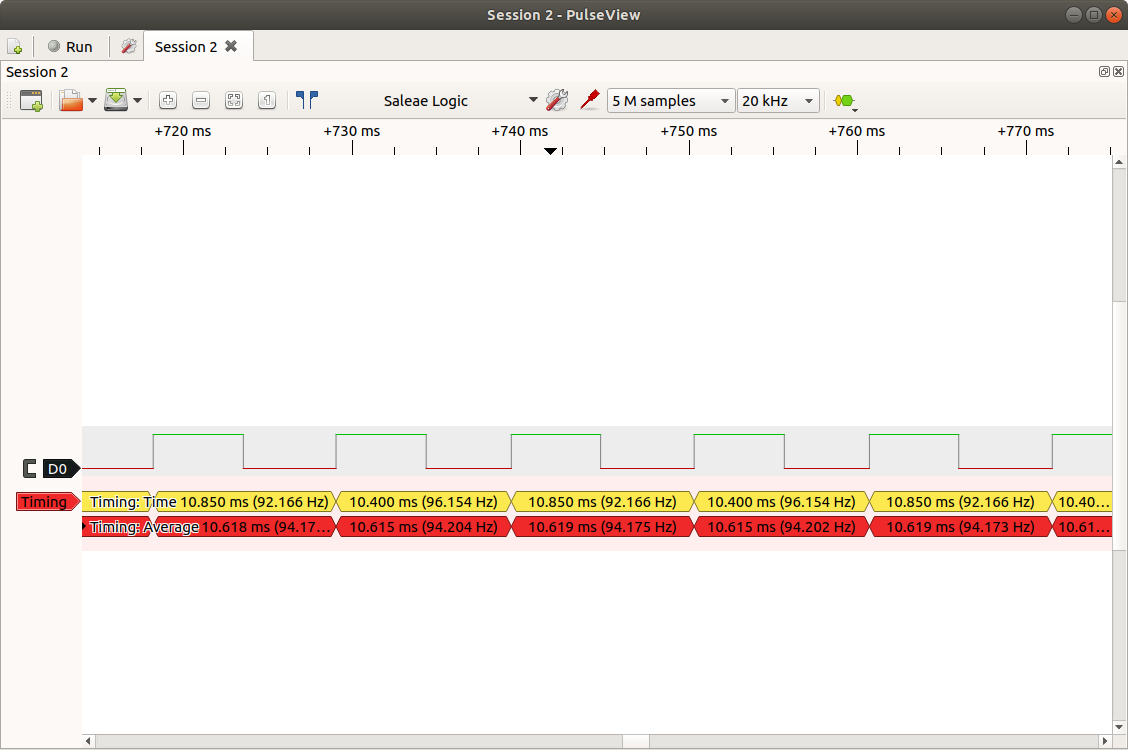
Here is the setup using the breadboard 5V power supply for the fan and the pull up resistor:

Here is zoomed in view of the pulses:
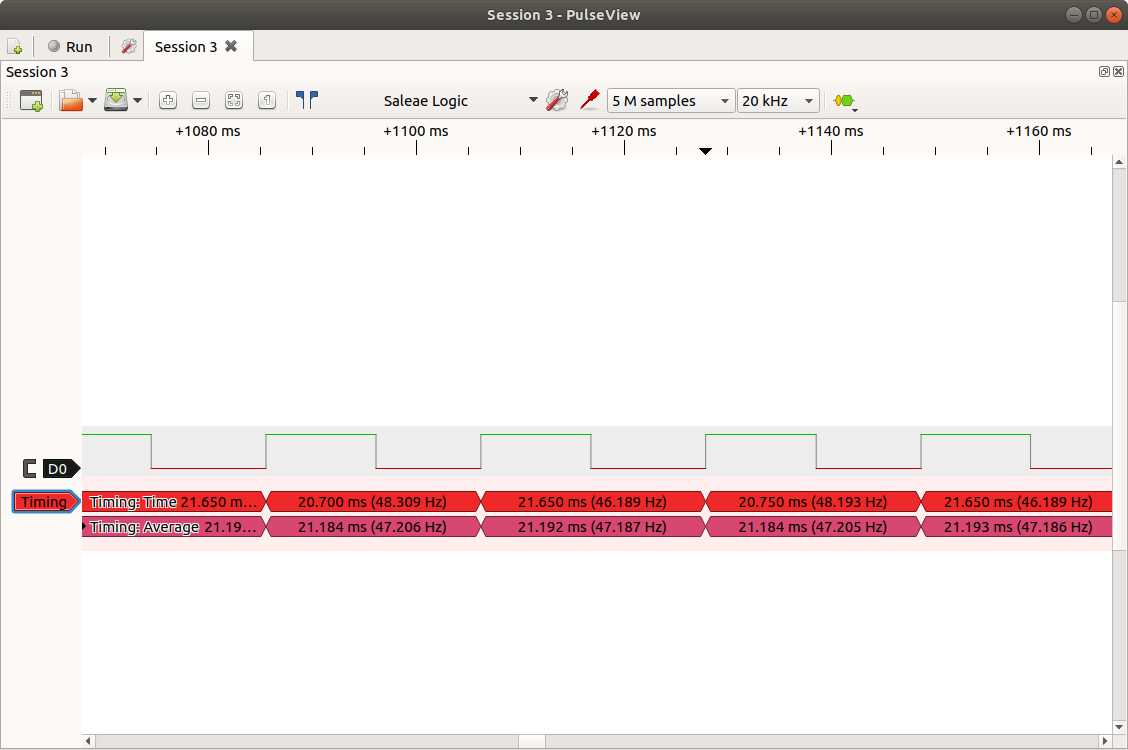
The logic analyzer is counting pulses at about 47 Hz, a bit higher than the other two methods but within tolerance of expected fan speed variability.
The setup for using the breadboard 3.3V power supply looks the same as the previous setup. Here is the data:
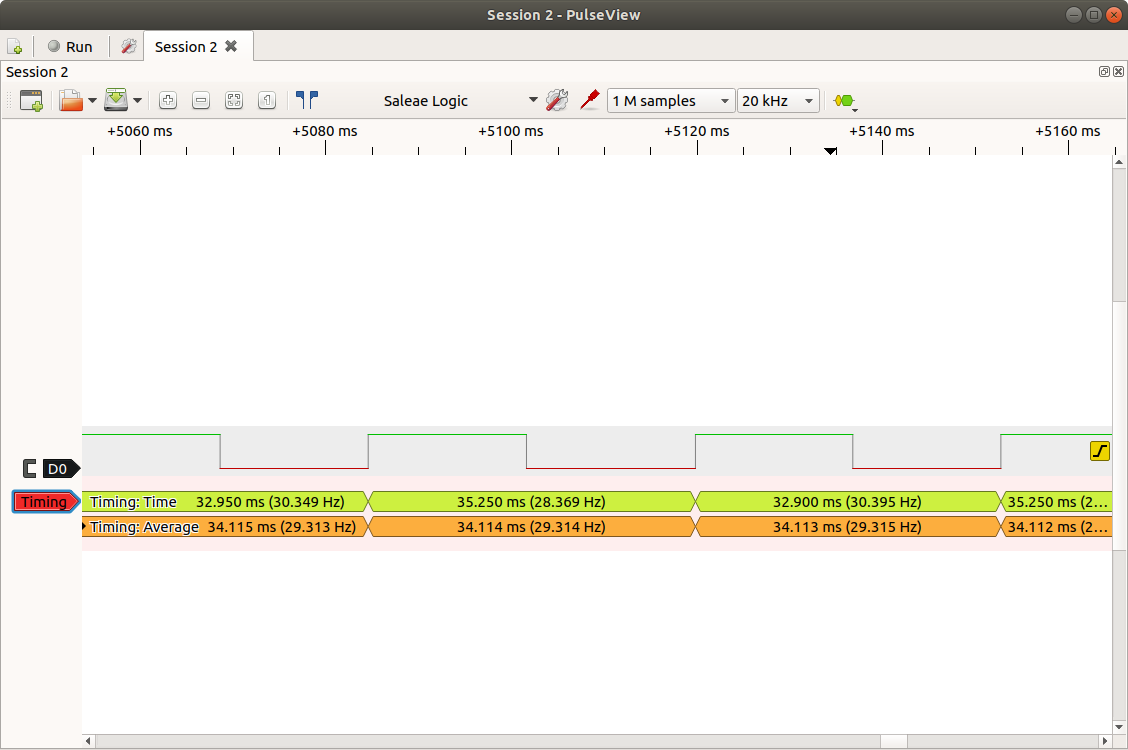
The logic analyzer counted pulses at about 29 Hz, in agreement with the oscilloscope measurement and consistent with the microcontroller measurement.
This project was a great way to learn how to use a logic analyzer and the powerful PulseView software.
subscribe via RSS